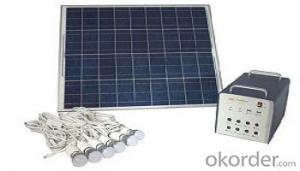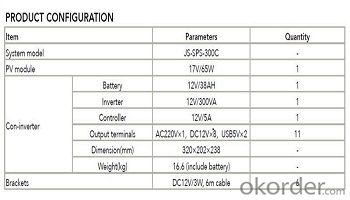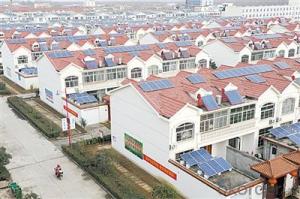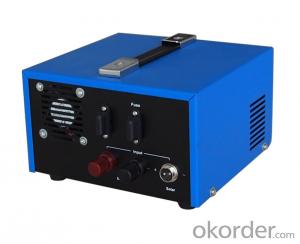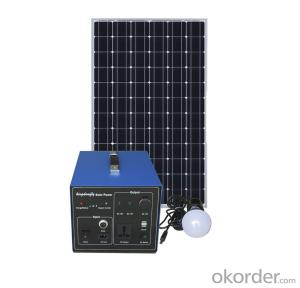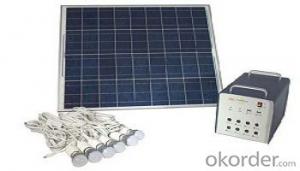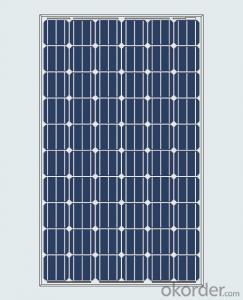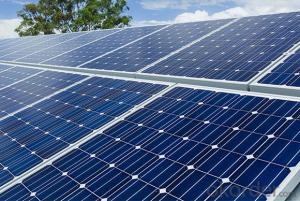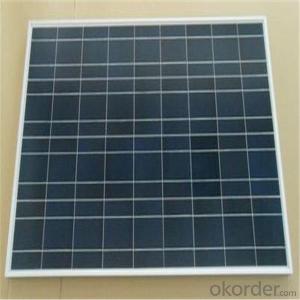Sun First Solar Energy Systems - SPS 300C SunPower Solar Module with LED Lighting
- Loading Port:
- China main port
- Payment Terms:
- TT OR LC
- Min Order Qty:
- 10 watt
- Supply Capability:
- 100000 watt/month
OKorder Service Pledge
OKorder Financial Service
You Might Also Like
Product Description:
Name: SPS-300C sunpower solar module
Solar power system provides alternating current and direct current, which is produced by the modules transforming solar power into power, to home lighting, household appliance and other DC appliance, such as cell phone and laptop.
Solar power system is widely used in area lack of power, for example house power supplying, monitoring, communication base, fire prevention in forest area, pasture and meadow, aquaculture etc.
Solar DC Lighting System
Multiple protection system, safe and reliable performance.
Integrated and portable design, easy operation.
DC5V, DC12V, AC220V output, wide range application.
Clean engergy, cycle use.
Packaging & Delivery:
Packaging Detail: Quantity of carton :3pcs Color Box size: 28.5*11.5*487.5px , 2.66kg/pc Carton size: 36.5*31*575px G.W/N.W: 8.7/8.0 kg
Delivery Detail: 25 working days according to order quantity
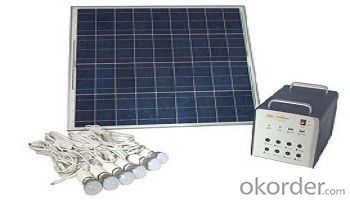
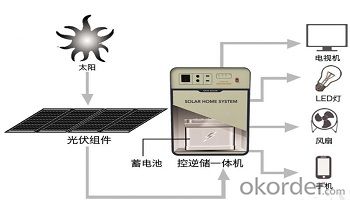
Advantages:
1.Solar Energy&green energy.
2. Easy to install, operate and maintain.
3. Ideal lighting products where normal electric is not convenient.
Packing details:
Quantity of carton :3pcs
Color Box size: 28.5*11.5*487.5px ,
2.66kg/pc
Carton size: 36.5*31*575px
G.W/N.W: 8.7/8.0 kg
Our services:
1. Sample: Sample is available. Please send us email about your detail consignee information: name, address, zip code and tel. Then we will contact you and send samples to you.
2. Small order: We can accept small order for this product. Please let us know your order quantity.
3. Customize: We accept OEM service and can customize products as customers' design.
4. After-sales service: We will give customers active feedback within 24hours after receive any of customers' questions.
- Q: What is the role of solar trackers in maximizing solar energy generation?
- Solar trackers play a crucial role in maximizing solar energy generation by dynamically orienting solar panels to follow the sun's path throughout the day. This constant adjustment ensures that panels receive maximum sunlight exposure, optimizing their energy output. By tracking the sun's movement, solar trackers increase the efficiency of solar panels, resulting in higher energy production and improved overall performance.
- Q: Can solar energy systems be used for powering electric vehicle repair and maintenance facilities?
- Yes, solar energy systems can definitely be used for powering electric vehicle repair and maintenance facilities. Solar panels can be installed on the rooftops or in the vicinity of the facility to harness sunlight and convert it into electrical energy. This renewable energy source can then be used to power various equipment and tools required for repairing and maintaining electric vehicles. By using solar energy, repair and maintenance facilities can significantly reduce their reliance on traditional electricity grids and fossil fuel-based energy sources. This not only helps to lower operating costs but also minimizes the carbon footprint of the facility, promoting sustainability and environmental responsibility. Moreover, electric vehicle repair and maintenance facilities often have large roofs or open spaces which are ideal for installing solar panels. The excess electricity generated during daylight hours can be stored in batteries or fed back into the grid, ensuring a continuous and uninterrupted power supply even during cloudy or nighttime conditions. In addition to powering the facility itself, solar energy systems can also be used to charge electric vehicles directly. By installing electric vehicle charging stations connected to the solar panels, the facility can offer renewable energy charging options to customers, making it more attractive for electric vehicle owners. Overall, using solar energy systems to power electric vehicle repair and maintenance facilities is a sustainable and economically viable solution that aligns well with the growing adoption of electric vehicles and the need to reduce greenhouse gas emissions.
- Q: What are the advantages of using solar energy?
- There are several advantages of using solar energy. Firstly, it is a renewable source of energy, meaning that it can be continuously replenished and will never run out. This makes it a sustainable and environmentally friendly option. Secondly, solar energy helps to reduce greenhouse gas emissions and combat climate change, as it does not produce any harmful pollutants during operation. Additionally, solar energy systems are relatively low-maintenance and have long lifespans, resulting in reduced operational costs. Moreover, solar energy can be harnessed in remote areas where traditional electricity sources are not accessible, providing power to underserved communities. Lastly, installing solar panels on residential or commercial buildings can lead to significant savings on electricity bills. Overall, the advantages of using solar energy include sustainability, environmental benefits, cost savings, and increased energy accessibility.
- Q: Can solar panels be installed on different types of roofs?
- Yes, solar panels can be installed on different types of roofs, including pitched roofs, flat roofs, metal roofs, and concrete tile roofs. The specific installation method may vary depending on the roof type, but with proper design and mounting equipment, solar panels can be successfully installed on various roof surfaces.
- Q: How much money can I save with solar energy?
- The amount of money you can save with solar energy depends on various factors such as your location, energy usage, system size, and local incentives. However, on average, homeowners can save thousands of dollars over the lifespan of their solar panel system.
- Q: What is the role of solar energy systems in reducing energy poverty?
- Solar energy systems play a crucial role in reducing energy poverty by providing affordable and sustainable electricity access to communities without reliable access to the grid. These systems harness the power of the sun to generate clean energy, which can be used for lighting, cooking, and powering appliances. By eliminating the need for costly and polluting fuels like kerosene, solar energy systems offer a more affordable and environmentally friendly alternative. They empower individuals and communities, improving education, healthcare, and economic opportunities, ultimately breaking the cycle of energy poverty.
- Q: Can solar energy systems be used in powering dental clinics or medical clinics?
- Certainly, dental clinics or medical clinics can indeed utilize solar energy systems to generate power. Solar energy, a clean and sustainable power source, can be harnessed through photovoltaic (PV) panels to produce electricity. These panels convert sunlight into usable energy, which can then be utilized to operate various electrical equipment and appliances in dental or medical clinics. Typically, dental and medical clinics require a substantial amount of electricity for their operations, including lighting, air conditioning, medical equipment, computers, and other electrical devices. By installing solar panels, these clinics can decrease their reliance on the traditional power grid and lower their electricity expenses. Solar energy systems can be tailored to meet the specific energy requirements of dental or medical clinics, ensuring smooth and efficient functioning. The electricity generated by solar panels can be optimized by analyzing the clinic's energy consumption patterns and installing an appropriate number of solar panels to meet the demand. Moreover, besides the cost savings, employing solar energy systems also offers environmental advantages. Solar power is a clean energy source that does not produce any greenhouse gas emissions or air pollutants during operation. By transitioning to solar energy, dental and medical clinics can decrease their carbon footprint and contribute to a healthier environment. Additionally, solar panels have a long lifespan and require minimal maintenance, making them a dependable and resilient energy solution for dental and medical clinics. With proper installation and regular inspections, solar energy systems can provide a consistent and uninterrupted power supply for many years. All in all, solar energy systems present a practical and feasible choice for powering dental or medical clinics. They provide cost savings, environmental benefits, and a reliable electricity source, enabling clinics to operate efficiently while minimizing their impact on the environment.
- Q: Are solar energy systems expensive to install?
- Solar energy systems can be expensive to install initially, but they offer long-term benefits and savings on energy bills. The cost of installation depends on various factors such as the size of the system, location, and available incentives. However, with the decreasing cost of solar technology and potential for government incentives, the overall cost has become more affordable in recent years. Additionally, considering the long lifespan and the potential to sell excess energy back to the grid, solar energy systems can be a wise investment in the long run.
- Q: What is the difference between a solar power purchase agreement (PPA) and a solar lease?
- A solar power purchase agreement (PPA) involves a contractual agreement between a solar energy provider and a consumer, where the consumer agrees to purchase the electricity generated by the solar system at a predetermined rate over a specified period of time. On the other hand, a solar lease is a contract that allows a consumer to lease a solar energy system from a provider, paying a fixed monthly fee to use the system and benefit from the electricity it generates. The main difference between the two is that in a PPA, the consumer only pays for the electricity they consume, while in a solar lease, they pay a fixed monthly amount regardless of the amount of electricity generated. Additionally, in a PPA, the provider is responsible for the installation, maintenance, and operation of the solar system, whereas in a solar lease, the consumer is typically responsible for the maintenance and operation.
- Q: How does the size of a solar energy system affect its installation cost?
- The size of a solar energy system directly affects its installation cost. Larger solar energy systems typically require more solar panels, inverters, and other equipment, which in turn increases the overall cost of installation. Additionally, larger systems often require more complex mounting systems and electrical wiring, which can further contribute to the installation cost. However, the cost per watt of a solar energy system generally decreases as the system size increases. This is because larger systems benefit from economies of scale, allowing for bulk purchasing of materials and reduced labor costs. As a result, the cost per watt decreases, making larger systems more cost-effective in terms of installation. Furthermore, the size of the solar energy system also impacts the amount of energy it can generate. Larger systems have a higher capacity and can produce more electricity, making them suitable for fulfilling higher energy demands. This can be advantageous for homeowners or businesses with larger energy consumption, as they can offset a greater portion of their electricity bills. It is important to note that the specific installation cost of a solar energy system depends on various factors such as location, equipment quality, labor costs, and available incentives. Therefore, while size is a significant factor, it is not the sole determinant of the installation cost.
Send your message to us
Sun First Solar Energy Systems - SPS 300C SunPower Solar Module with LED Lighting
- Loading Port:
- China main port
- Payment Terms:
- TT OR LC
- Min Order Qty:
- 10 watt
- Supply Capability:
- 100000 watt/month
OKorder Service Pledge
OKorder Financial Service
Similar products
Hot products
Hot Searches
Related keywords
